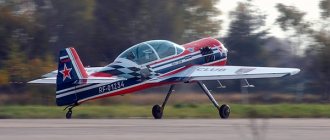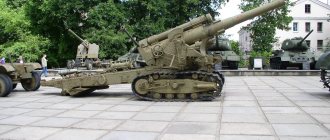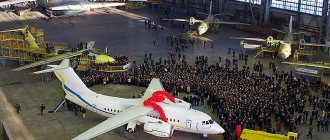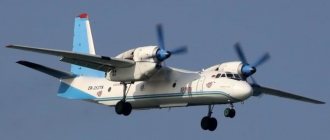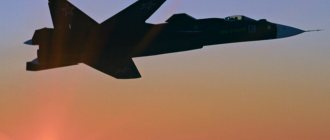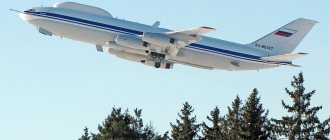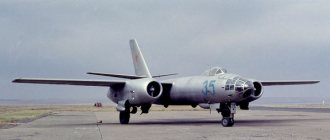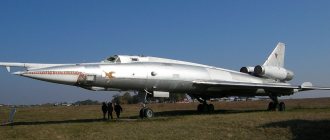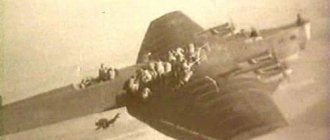The An-225 Mriya aircraft appeared at the beginning of the collapse of the Soviet Union. Created to support the Buran space program, the gigantic machine turned out to be virtually unclaimed and stood disassembled for more than 7 years. Antonov’s “Dream”, as “Mriya” is translated from Ukrainian, was saved by its outstanding load-carrying characteristics, which turned out to be in demand at the beginning of the 21st century.
The aircraft has a service life of 45 years, so the aircraft will be in the air until December 2033.
History of creation
In the 70s of the last century, the USSR and the USA competed closely in the field of space exploration. The first long-term stations appeared, to which it was necessary to deliver cargo and personnel. The disposable launch vehicles used were expensive, so the idea of creating reusable spacecraft arose. The development program for such aircraft was created first in the USA and then in the USSR.
The Soviet program included the production of spacecraft components at several enterprises. The final assembly of the reusable spacecraft, called Buran, and the Energia launch vehicle was planned at the Baikonur Cosmodrome.
The Buran flight program included landing at various airfields located on the territory of the USSR. The return delivery of the shuttle to Baikonur turned into a complex transport problem.
It was then that a proposal arose to use a large transport aircraft to deliver components and return the spacecraft to the launch pad. In the early 80s, a new idea was born to ensure takeoff from a horizontal launch pad, which could be a transport aircraft.
The plane acted as the first launch stage, and on the outer part a space shuttle was installed with a separate propulsion and fuel system.
Antonov Design Bureau proposed to create a similar aircraft based on the An-124 Ruslan components. The project of the future An-225 acquired common features by 1984. The project was led by V.I. Tolmachev.
The development and construction of the machine lasted three years. The first An-225 aircraft was built on the last autumn day of 1988. The tests proceeded at a rapid pace - after several cycles of running and taxiing tests, the plane took off. This happened in the second half of December. At the beginning of February next year, the aircraft was presented to the press at the Boryspil airfield, near Kiev.
The An-225 appeared quite late and did not have time to take part in the transportation of components for the construction of the shuttle. In the spring of 1989, Mriya was demonstrated at the Paris Air Show. The plane flew there with the Buran installed on the outer part of the fuselage.
In total, one copy of the machine was built, which is currently in operation. The construction of the second copy was frozen due to the difficult economic situation and the beginning of the collapse of the USSR.
How we lost the world's largest plane "Mriya"
President Putin called for “changing the situation” and “forming ambitious, but at the same time purely realistic plans and goals.”
By a strange coincidence, the Security Council meeting on space took place two days after another triumph of the American aerospace industry - the first flight of the world's largest aircraft - the experimental Stratolaunch. It was created as a platform for the air launch of launch vehicles delivering satellites and space cargo into orbit.
In fact, Stratolaunch can be called a flying spaceport. But the Americans are not the first to successfully work on the creation of an air-to-space launch. We were the first 30 years ago. And today they became the last.
What has Russia lost? Why is the United States today implementing a fundamentally new approach to launching its vehicles into space, which is the future, while our aviation and rocket and space industries are only improving the technologies of the middle of the last century?
***
On Saturday morning, April 13, the news about the first test flight of Stratolaunch did not stay long in the top of the Runet, quickly getting lost among data on butter research and scandalous details of the Ukrainian elections. Only a few fans of scolding the States with or without reason, having seen footage of the flying Stratolaunch, hastened to criticize it on social networks: they say, the flight is just a test. And the giant was not flying so high and not so fast. In short, it's nonsense.
But NASA astronaut Thomas Zurbuchen, on the contrary, called the first flight of Stratolaunch historic, saying: we are talking about going to the edge of space. And somehow I believe him more...
So what kind of plane did the Americans create?
Photo: facebook.com/Stratolaunch
Stratolaunch is the brainchild of the private American aerospace company Stratolaunch Systems, founded in 2010 by Paul Allen, better known as one of the founders of Microsoft, and the famous aircraft designer Burt Rutan. The company's mission is to develop an aerospace system for delivering cargo into space.
The first-born of Stratolaunch Systems is a giant weighing 250 tons, and with a full load - about 590 tons. It consists of two 73-meter fuselages equipped with six engines from the Boeing 747. The wingspan is 117 meters. It is entirely made of composite materials. Equipped with a 28-wheel chassis. Without refueling it can fly for about 10 hours.
According to official information from the developer, the plane first took off from an airfield near Los Angeles and circled over the Mojave Desert for about two and a half hours at an average speed of 304.2 km/h, reaching an altitude of just over 5,000 meters.
Those who are at least a little familiar with aviation probably remember that until recently our country, as the legal successor of the USSR, was proud of the world’s largest aircraft. This is the An-226 Mriya heavy transport aircraft, which was created in Kyiv, at the Antonov Design Bureau, built by Russian-Ukrainian aviation cooperation. First took off in 1988. And, by the way, to be honest, it is not the new American Stratolaunch, but the old Soviet Mriya that can still be considered the largest aircraft in the world, since the total take-off weight of the “American” is about 590 tons, while the An- 225 it was 640 tons.
Mriya, like Stratolaunch, was supposed to become an air launch pad for launching spacecraft under the Multi-Purpose Aerospace System (MAKS) project. Its preliminary design was defended back in 1989 and was created in the USSR under the leadership of the great domestic aircraft designer Gleb Lozino-Lozinsky, who developed the Energia-Buran project.
The plane that the Americans have now made is actually the first stage of a launch vehicle - the embodiment of Lozino-Lozinsky’s idea. Only he proposed making the An-225 such a stage. The second stage was a rocket or reusable aircraft mounted on an aircraft. With their help, it would be possible to launch a payload into space.
But the designer never managed to see the implementation of this idea. After his death in 2001, the MAX system, an analogue of which the Americans are now just testing, was destroyed due to lack of funds, short-sighted policies of government officials and interdepartmental squabbles.
Some details of this story were told to MK by one of Lozino-Lozinsky’s associates (he asked not to give his last name, since he still works in the industry).
Our well forgotten old
“Officially,” says the MK expert, “the An-225 Mriya aircraft was made under the Energia-Buran program (Soviet reusable space transport system, a response to a similar US project Space Shuttle - O.B. ) . That is, it was intended to transport components of the Buran shuttle and the Energia rocket from the production site to the launch site.
But its second purpose is as a carrier aircraft for the aerospace system. If you look closely at the appearance of the An-225, you will see that it has two “humps” on top of the wing - these are exactly the fastening elements of the spacecraft.
They were not needed to transport Buran or Energia. But they were made because the plane was being prepared as a carrier of an aerospace system. The only experimental aircraft still flies with them.
photo: en.wikipedia.org
The giant An-225 Mriya aircraft was created in the USSR as a platform for launching space rockets and aerospace vehicles.
According to our expert, the aerospace system should also have included an aerospace aircraft smaller than the Buran. The weight of the Buran was 105 tons, and the space plane was supposed to weigh no more than 26. It was made for many different tasks: both civilian and military.
The latter were not particularly discussed - the system had the strictest secrecy index. But then, when the project was revealed and it received the name MAKS - a multi-purpose aerospace system, then some of the tasks and what they were became known.
It had to be a manned vehicle. The main crew is two people. There was also an option when four people were added to the main crew in an additional pressurized cabin. The aerospace vehicle was supposed to launch various cargo into orbit. Including acting as a transport ship for the orbital station, delivering crews there.
“A little later,” says the expert, “the issue of industrial production in space of so-called nanoheteroepitaxial structures—the foundations of the most modern radio-electronic element base—was very seriously considered. It was for the development of these technologies that Zhores Alferov received the Nobel Prize.
The technological process for producing these structures required a deep vacuum. On Earth, building factories with vacuum chambers was very expensive and energy-intensive; the products were too expensive. The idea arose to do this in space.
Four institutes of the USSR Academy of Sciences joined in solving the problem. The point was not to “make space” on earth, but, on the contrary, to bring a technological installation into space. Agree, by that time we had been investing money in space for 30 years. So we decided: it’s time to bring them from space. This was precisely an attempt to move our space activities to another qualitative level.
By the beginning of the 90s, the project of an aerospace system for delivering cargo into space was protected, approved by academic science, specialized research institutes, departments and was only awaiting funding. From the point of view of “electronics of cosmic origin”, it was promoted by several institutes at once, since it was both more convenient and of higher quality to produce nanoheterostructures in zero gravity. It was also important that the transportation of these materials along the earth-to-space route and back should be relatively cheap.
“The transportation of semi-finished products to the “orbital plant” and the return of finished products to the ground was precisely what the aerospace aircraft was supposed to provide,” explains our interlocutor. — Solving the problem of reliable and cheap shuttle transportation was entrusted to Lozino-Lozinsky. And he solved it.
According to the conclusion of a number of expert organizations, including two foreign ones, good economic characteristics were shown at the design level. Moreover, such as no one can show us so far.
Don't we need this?
And then came 1991. The USSR is gone. Along with it, funds for space.
— We, the developers, were always told: you guys, just wait. And we waited,” our expert recalls. — They didn’t abandon the topic, they slowly knocked out some small funds to support the project. This continued until the early 2000s. But then the reorganization began. Some of the structures were reassigned and transferred to the jurisdiction of Rosaviakosmos, where our activities on the aerospace system project were quickly shut down.
True, in 2005–2006, the fate of this project unexpectedly saw a surge in activity: Roscosmos announced a competition for the project of a new generation reusable manned spacecraft called Clipper. It was supposed to replace the Soyuz series ships.
A winged version of the Clipper was developed, a full-scale model of the ship was created, and work began on the layout of the equipment. The Clipper was scheduled to enter service in 2015. But in June 2006, the management of Roscosmos made a strange decision - the competition was declared invalid.
“And what’s interesting,” recalls MK’s interlocutor, “at about the same time, a government letter came from Ukraine signed by a number of high-ranking leaders of Ukrainian industry (at that time) to the head of Roscosmos - at that time he was Anatoly Perminov There was still close Russian-Ukrainian aviation and space cooperation - O.B. ).
The letter said: Ukraine has retained the Mriya aircraft, it is operational and flies, and therefore Roscosmos is invited to resume joint work on the MAKS project. But the head of Roscosmos replied: we don’t need this.
A little later, Ukraine several more times offered Russia to buy the An-225 Mriya. Some aviation officials even stated that the deal was about to take place. But, as it turned out, no one was going to seriously negotiate about it: there was no interest. Nobody thought about the “space” capabilities of “Mriya” then. Only the commercial component was put at the forefront.
The world's largest transport ship was considered exclusively as a “heavy carrier” for large-sized cargo. And the An-124 Ruslan aircraft could easily cope with them.
And now, almost 30 years later, the United States has taken off its own aircraft, similar to the An-225, with a similar payload capacity and made for the same “space” tasks that our country voluntarily abandoned in the early 2000s.
“On this score, I tell my friends: abroad will help us,” our expert jokes bitterly. “Maybe at least now our people at the top will perk up when they see how far the Americans are ahead of us?” After all, back in 1989 we had both an approved MAKS project and a ready-made carrier aircraft for it. Now that’s it: politics has intervened. Now the Chinese are actively interested in the An-225 aircraft. Ukrainians have discussed this issue with them more than once. At the same time, China was interested in MAKS projects. There is no doubt that Beijing is looking ahead, understanding what it needs to do in space.
Miser pays twice
They say that a miser pays twice. It seems that we will have to pay even more for our abandonment of the multi-purpose aerospace system. And in the very near future.
According to experts, the advantages of an aerospace launch over rocket launches from a ground-based cosmodrome are obvious. First of all, for northern countries such as Russia.
The Russian northern cosmodrome Plesetsk (Arkhangelsk region) and even Vostochny (Amur region), Kapustin Yar (Astrakhan region) and Baikonur (Kazakhstan) located in the mid-latitudes, because of their geographical location, are obviously inferior to cosmodromes located on or near the equator. Equatorial space sites receive a significant (up to 10–15%) energy gain when launching rockets. Accordingly, the same carrier launching from the equator can launch a larger payload into orbit.
This effect is achieved due to the most complete use of the Earth's rotational energy by the rocket at launch. The angular velocity of the Earth's rotation is the same at both the poles and the equator. But the absolute speed at the equator is higher, since in the same time a point near the pole will travel less distance than a point near the equator. So it turns out that a rocket launching near the zero parallel receives additional acceleration.
Since there are not many convenient places for ground-based spaceports on the equator, the idea of sea launches was born. This is when a floating platform goes to the equator, and launch vehicles launch from there. In Russia, such a “Sea Launch” was made jointly with the United States, Norway and Ukraine, whose Zenit rockets were launched from a floating platform. But then the States did everything to “sink” this project.
Air launch also allows a rocket or aerospace aircraft launched from an aircraft to save energy, which means it can take on an additional amount of payload. In addition, the carrier aircraft allows the spacecraft to be launched into any desired orbit, with any inclination.
Neither from Baikonur nor from Vostochny, due to their location in mid-latitudes, is it possible to immediately launch a satellite into an orbit whose inclination is less than the latitude of the launch point. For example, such a device will not enter an equatorial orbit from this launch point without additional maneuver at the launch site or subsequent inter-orbital transitions. And they require additional fuel, which, accordingly, reduces the payload of the satellite launched into space.
But the aircraft, which acts as an air spaceport, can easily take off from any Russian airfield, fly to the equator and from there send a rocket with satellites into geostationary orbit without any loss of fuel due to rotation of the orbital plane.
In addition, any ground-based spaceport must have a huge exclusion zone around it for rocket stages with fuel residues falling during launch, which seriously affects the environment. Everything is simple with an airplane: it takes off, launches the aircraft, lands - and there is no harm to the environment.
Further: with the help of a reusable launch vehicle, launches can be carried out even within a week, and not like now, when the rocket, after installation on the launch pad, needs to be prepared for launch for several more days. And after the launch, carry out a series of activities for weeks to check the launch equipment and prepare the refueling masts for the next launch.
“And this is still not counting the huge funds,” says our expert, “that are spent on renting Baikonur and building the Vostochny cosmodrome. So consider: now the cost of launching a Soyuz rocket costs us $40–46 million. According to the MAKS project from the Mriya launch vehicle, it was estimated at about $8–9 million, adjusted for the current dollar exchange rate.
Photo: facebook.com/Stratolaunch
It is too early to talk about the cost of launches from Stratolaunch, but, according to some calculations, it is an order of magnitude less than the cost of launching payloads into space from the ground. We are already losing our positions in the commercial space launch market, where Russia has been leading in recent years. And this leadership was a source of national pride. In 2020, the USA and China overtook us. Private companies involved in space launches are already hot on their heels. And now think: if launching from a heavy carrier aircraft is many times cheaper and just as many times more effective, then who will be interested in us and our rockets when the Americans complete their Stratolaunch?
Our hopeless future
This is how another MK expert who at one time did a lot to support the aerospace launch project, head of the Department of Aviation and Space Industry of the Russian Ministry of Economy (1997–1999) Alexander Knievel, speaks about this problem:
— We are behind the Americans because our “winged” space, as I call it, is generally in the paddock. Today we have a separate aviation industry and a separate space industry. And all over the world there is the aerospace industry, when all companies and technologies work simultaneously for both space and aviation. For example, Boeing is an aerospace company, not just an aviation company. It's the same in Europe. This is all one industry and one technology. We did the opposite: everything that was more or less united before was broken into two parts. And these parts do not fit together. And the example with this American plane shows that they need to be docked.
— Do you think this aircraft can connect not only civil aviation and space, but also military and civil missions?
- Undoubtedly. When a rocket at the initial stage takes off from the ground, overcoming the resistance of the atmosphere, it burns the largest amount of fuel and, due to the formation of a powerful torch during its combustion, literally glows. At the moment of such a launch, the missile is easily detected by optical and infrared sensors and is most vulnerable to missile defense and air defense systems.
But if it launches from a carrier aircraft at an altitude of several kilometers, its launch is not only much less noticeable, but also less accessible to the effects of destruction means. The United States was deathly afraid of our missile launchers based on railway platforms. Because it was difficult to keep track of them. But here the system would be much more mobile.
— Did our MAKS project also have a military component?
“She simply couldn’t not exist.” They didn’t talk about this loudly, but everyone naturally understood that if the MAKS program had been implemented, then at that time, from a military point of view, this would have ensured our country dominance in space.
- Why didn’t this happen? Is it just due to lack of funds?
- Don't think. You know, now many on the Internet have attacked the American project Stratolaunch: they say that its developers have not achieved anything special.
This reaction reminded me of the 90s, when in our aviation industry everyone who was seen in warm friendship with the Americans also took up arms against Gleb Evgenievich Lozino-Lozinsky with terrible force. I think because at that time for the United States, the creation of such an aerospace launch system in our country posed a terrible threat. In the military version, the United States would not be able to oppose anything to it at all. But for us, its creation, including the money, was quite within our capabilities. "Mriya" was already flying, and everything else was relatively inexpensive. But this project was shelved.
But they rushed with all their might to implement the Sea Launch project with the Americans and Ukrainians. We spent a lot of money. So what do we have with the goose? What breakthrough and where did we make it?
— Do you want to say that those who today criticize the American Stratolaunch are also doing this for a reason?
— It’s hard to say... Perhaps some of them are just amateurs. But I think there are those who are interested in convincing us all, including the country’s leadership, that an aerospace launch is too expensive, problematic and futile. This is a kind of manifestation of information warfare.
- Sounds like a conspiracy theory.
- Maybe. If intelligence manages to mislead the enemy and direct him along a false and resource-consuming path, then this is simply a successful disinformation operation.
photo: en.wikipedia.org
Hereditary nobleman, head of the NPO "Molniya", Hero of Socialist Labor, laureate of the Lenin and two Stalin Prizes G.E. Lozino-Lozinsky. Author of the Multi-Purpose Aerospace System (MAKS) project.
“What the Americans have now demonstrated is actually the first stage of a launch vehicle. The idea that Lozino-Lozinsky proposed?
- Yes, and it was not fantasy or empty dreams. Science has issued conclusions confirming its feasibility with the given parameters. Back then we could be 20–25 years ahead of the United States in space launch systems, but now we ourselves are the same amount behind them.
The main thing is that the Americans receive a reusable, cheap system for launching vehicles into space with a returnable first stage - the Stratolaunch aircraft. Yes, things are not easy for them. And they move slowly. But we don’t do anything at all.
We had everything worked out, approved and half done. Everything could be put to work. But the lobbyists who to this day stand for the vertical launch of vehicles into space are so strong and, as far as I understand, they are supported, including from overseas, that we are driving ourselves into this lag.
What technologies do we use for vertical launch into outer space? Back in the 60s of the last century. The ones that were used when Gagarin flew. All these “verticals” and new “Unions”, in general, yes, are somewhat technically refined and improved, but in essence they are all from the middle of the last century. And what Lozino-Lozinsky proposed, and what the United States is doing, is a completely new approach to launching into space, which is the future. It's just a pity that it's not ours.
Read the material “The Ministry of Defense decided to save on the “Night Hunter”
Features and Features
The An-225 Mriya aircraft is used to transport cargo of the following categories:
- Large items placed inside the cargo compartment. The weight of the cargo over a short flight distance should not exceed 250 tons, and the length should not exceed 43 m. When flying within a continent, the weight of the cargo is limited to 200 tons; for delivery between continents, the weight is reduced to 150 tons.
- Delivery of monocargo weighing up to 200 tons, placed on the outside of the fuselage.
- It is possible to use the An-225 aircraft as a launch platform for space systems.
The dimensions of the cargo compartment allow you to accommodate:
- 16 standard aviation containers of the UAK-10 type (weighing 10 tons each);
- 50 middle class passenger cars;
- individual loads weighing up to 200 tons (for example, casings of steam or gas turbines, stators and rotors of generators for power plants, large mining dump trucks).
In popular culture
- The plane is shown in the film "2012", under the name "Antonov-500". In the film, the plane is modified - there is a rear loading ramp, which is absent from the original Mriya plane.
- In the game "Battlefield: Bad Company 2", a detachment of US Marines tries to destroy weapons of mass destruction that are transported on an airplane. One of the infantrymen recognizes this plane and informs his comrades that this is the largest aircraft in the world - the An-225 Mriya and adds the translation of this word (in the Russian version - “Dream”). In the game, the plane is modified - there is a rear loading ramp, which is missing on the original Mriya plane, and the tail unit is single-finned, like the An-124.
Technical description
The Tu-225 aircraft is built on the basis of components and parts of the Ruslan transport aircraft. The fuselage of the Mriya has an increased length due to inserts. In cross-section, the fuselage consists of two intersecting circles. There are cargo and passenger decks inside. The power structure of the fuselage is assembled using welded and adhesive joints.
The outer skin is working. To increase structural rigidity, the aft loading hatch has been removed. To ensure the possibility of placing cargo on the upper part of the fuselage, a two-fin tail unit was used.
Due to the increase in the size of the aircraft, a new wing center section was used. The wing mechanization does not differ significantly from the Ruslan. The AN-225 aircraft uses six D-18T turbojet engines developed at the Progress Design Bureau. At takeoff, the engine develops a thrust of 230 kN, the total thrust of the power plant is 1380 kN.
The engines are started by a flow of air that spins the compressor impeller.
An auxiliary power unit is used to power the starting system and operate the electrical systems when parked. It consists of two TA-12 gas turbines located on the sides of the fuselage in the chassis fairings.
On the distribution box of each D-18T engine there are two hydraulic pumps and a 60 kVA generator. The generator produces alternating high-frequency current used to operate the on-board equipment of the An-225 Mriya.
The fuel supply is located in 13 caisson-type tanks. The tanks are located in the center section and wing. The maximum tank capacity is 365 tons. Aviation kerosene TS-1 or RT substitute is used as fuel. The fuel supply provides a ferry flight range of 15,000 km.
Fully refueling an An-225 aircraft is a lengthy and complex task. Refueling time depends on the airfield equipment and tankers. In some cases, refueling the aircraft took up to a day and a half.
The chassis is equipped with a bow rotating double strut, with wheels measuring 1120*450 mm.
The main supports are located on the sides of the fuselage. Each support includes seven racks equipped with two tubeless wheels measuring 1270*510 mm. To reduce the turning radius of the aircraft on the airfield, the four rear rows of struts can be rotated.
Due to the heavy weight of the aircraft, the warranty life of the tires was 90 landings. The rubber manufacturer was the Yaroslavl Tire Plant. For all tires, an air pressure of 12 atmospheres was considered normal.
At the bottom of the fuselage there is a sealed cargo compartment. The compartment has a length of 43 m, a floor width of 6.4 m, and a height of 4.4 m. Two guides equipped with roller rollers are installed on the floor. The compartment is loaded through the cargo gate located on the front of the fuselage. To load, the nose cone rises up, and the ramp extends in parallel.
To make loading easier, the fuselage tilts forward using an adjustable nose landing gear. The strut tilts forward and the fuselage rests on two supports located on either side of the nose strut. When the fairing is closed, additional supports are removed under it.
Guides with rails for moving gantry cranes are installed on the side walls of the cargo compartment. There are a total of four cranes with a lifting capacity of 5000 kg each. To tighten cargo into the compartment, there are two winches installed on the floor. The compartment provides space for storing the airfield towing carrier.
The design of the product is unique; there is no second one like it in the world.
From the front of the cargo compartment you can access the upper deck, where the control cabin and passenger compartment are located. The compartment is divided by the wing spars and center section into two sections of different sizes. There is no direct communication between sections. In the front section adjacent to the control cabin, there are rest areas for the reserve crew (6 people).
The rear part of the passenger cabin is designed to accommodate personnel accompanying the cargo, as well as for technicians servicing crane mechanisms. The cabin is equipped with 12 seats, tables for eating and working with documentation. The cabin sections are sealed from one another. The cabin of the accompanying personnel is connected to the cargo compartment by a hatch and a ladder located in the rear of the aircraft.
The crew rest cabin is adjacent to the technical compartment located closer to the center section of the An-225 aircraft. The compartment serves as a place for installing equipment and a switching unit for pipelines of air conditioning and sealing systems. The compartment contains control of the anti-icing complex. The rear wall of the compartment is the front spar of the center section.
Shafts and drive mechanisms for the slats, and air supply pipelines from the engine nacelles are installed along the wall. Along the lower edge of the wall there are 10 cylinders of the standard fire extinguishing system, filled with freon.
The cockpit is equipped with two seats installed in front.
The ship's commander and co-pilot are located in these places. Behind them there is a passage in which the workplaces of the remaining crew members are installed - the navigator, two flight engineers (one of them is senior) and the radio operator. In the passage along the sides there are instrument panels, including a board for monitoring engine operating parameters.
It is the responsibility of the crew to ensure that the cargo is correctly positioned. This is due to the need to locate the center of gravity of the An-225 aircraft within specified limits. The loading manager installs the loads in accordance with the developed scheme. The co-pilot's responsibilities include checking the location of the cargo. The final decision on takeoff is made by the crew commander.
The control of the An-225 aircraft is equipped with hydraulic boosters. If the hydraulics fail, it is not possible to manually deflect the control planes. To prevent such situations, the control system has four control channels. The pedals and steering wheel are connected to hydraulic distributors by a system of rods and cables.
To control engine operating modes, a block of throttle levers located between the front seats is used.
The levers are connected by rods to an electromechanical fuel supply regulator located on the engine. The levers of the external pairs of engines are connected to each other during takeoff and landing.
Cooperation in the creation of the An-225 aircraft
Data source: memoirs of Anatoly Vovnyanko, one of the designers of the An-225 aircraft.
...In 1985, the Politburo of the CPSU Central Committee decided to expand work on the construction of the An-225 aircraft, and it was necessary to expand work both at KMZ and throughout the Ministry of Aviation Industry (MAP) ...
...At all the factories participating in the cooperation and supplying components, very hard, intense work was going on, since the deadlines were very tight...
...Hundreds of thousands of scientists, designers, engineers, military personnel, pilots, workers and other specialists of the former USSR directly and indirectly participated in the creation, construction, flight testing and certification... A deep bow to all of them and many thanks!
The table below shows just some of the main enterprises involved in the creation of the An-225 aircraft:
| Main works performed by the enterprise | City | Company name at the time of production | Current name of the company (as of IV.2014) |
| Design : basic design work on the aircraft. Production : most of the new components, small fuselage parts and system parts, fairings and fairings, center section nose section and others. Assembly : assembly of the fuselage in a slipway, general assembly of the aircraft. Other work : all work after assembly. | Kyiv | Kiev Mechanical Plant (KMZ) / OKB named after O.K. Antonov (USSR) | State Enterprise "ANTK named after O.K. Antonov" (division of the State Enterprise "Antonov") (Ukraine) |
| Production : new large-sized milled power frames, fuselage bases and brackets, some serial components and aircraft parts | Ulyanovsk | "Ulyanovsk Aviation Industrial Complex" (UAIC) (USSR) | JSC Aviastar-SP (Russia) |
| Production : new central parts of the wings with flaps and end (detachable) parts of the wings - serial consoles from the An-124 | Tashkent | "Tashkent Aviation Production Association named after V.P. Chkalov" (TAPOiCh) (USSR) | State Joint-Stock Company "Tashkent Aviation Production Association named after V.P. Chkalov" (Uzbekistan) |
| Production : fuselage nose, front landing gear mounts, new horizontal and vertical tails, engine pylons and cowlings, ball screw mechanisms for the front fuselage struts and others. | Kyiv | "Kiev Aviation Production Association" (KiAPO) (USSR) | Serial (division of the State Enterprise "Antonov") (Ukraine) |
| Design : new A-825 modernized flight equipment complex (A-825M aircraft control complex) Production : A-825M aircraft control complex | Moscow | "Moscow Institute of Electromechanics and Automation" (MIEA) (USSR) | JSC "Moscow Institute of Electromechanics and Automation" (Russia) |
| Production : serial engines D-18T | Zaporozhye | "Zaporozhye Engine Plant" (Motor Plant No. 29) (USSR) | Public Joint Stock Company "Motor Sich" (Ukraine) |
| Design : new aircraft landing gear Production : aircraft landing gear. | Gorky (now Nizhny Novgorod) | "Gidromash" (USSR) | Nizhny Novgorod open joint-stock company "Gidromash" (Russia) |
| Painting : specialized painting with polyurethane paint (specialists from Voronezh were brought to Kiev) | Voronezh | "Voronezh Aviation Plant" (USSR) | Voronezh Joint-Stock Aircraft Manufacturing Company (Russia) |
Exploitation
The only copy of the An-225 aircraft received the Soviet tail number USSR-82060. After the collapse of the country and the transfer of the car to Ukraine, the number changed to UR-82060. In the spring of 1994, the flight prototype of the vehicle was mothballed (along with the second unfinished model).
The plane remained in this form until the summer of 2000, after which it was decided to return it to service. Some of the equipment on the An-225 was replaced and a number of new devices were installed to ensure flight safety.
Commercial flights began at the end of 2001. The machine is used by Antonov Airlines, a subsidiary of Antonov Design Bureau. The aircraft is chartered to transport unique large and heavy cargo over various distances.
Performance characteristics and records
| Takeoff length (without load), m | 2 400 |
| Takeoff length (with full load), m | 3 500 |
| Run length (without load), m | 2 400 |
| Run length (fully loaded), m | 3 300 |
| Crew, man | 6 |
| Maximum speed, km/h | 850 |
| Cruising speed, km/h | 750 |
| Ferry flight range, km | 15 400 |
| Range with cargo, km | 4 500-9 600 |
| Permissible take-off weight, kg | 600 000 |
| Wingspan, mm | 88 400 |
| Length, mm | 84 000 |
| Height, mm | 18 100 |
The An-225 Mriya aircraft holds a series of records:
- transportation of the longest load (two wind turbine impeller blades with a length of 42.1 m each);
- the weight of cargo transported in one flight is 253,800 kg;
- the weight of the transported mono cargo is 187,600 kg.
In total, the An-225 holds more than 250 world records, many of which are unlikely to be broken in the foreseeable future.
Records
An-225 on a silver coin 20 hryvnia
Front view
Comparison of the dimensions of the largest aircraft in the world
The An-225 is the heaviest cargo aircraft ever to fly. The only aircraft superior to the An-225 in terms of wingspan is the Hughes H-4 Hercules, which belongs to the class of flying boats and flew only once in 1947[18]. In 2020, the largest double-fuselage transport aircraft, Scaled Composites Stratolaunch Model 351, was presented in the United States, surpassing the An-225 and Hughes H-4 Hercules in wingspan (117 m), however, according to preliminary data, it is inferior to the Mriya in terms of maximum takeoff weight and payload capacity (the first flight of Stratolaunch took place in 2020[19]).
The Mriya aircraft set a number of world records for take-off weight and payload. On March 22, 1989, the An-225 made a flight with a cargo of 156.3 tons, in which one hundred and ten world aviation records were simultaneously broken. [ source not specified 527 days
] Such an achievement is a record in itself.
In August 2004, a new record was set - Mriya transported two hundred and fifty tons of special equipment ordered by Zeromax GmbH from Prague to Tashkent with an intermediate landing in Samara. [ source not specified 527 days
]
In August 2009, the aircraft was included in the Guinness Book of Records for transporting the largest monocargo cargo in the history of aviation with a total weight of 187.6 tons. It was a generator weighing 174 tons, which was transported along with a special frame from Frankfurt, Germany to Yerevan for a new Armenian power plant [20] (see Discovery Science, “Special Forces “Heavy Machines” program).
"Mriya" holds the absolute record for carrying capacity - 253.8 tons[20].
On June 10, 2010, the longest cargo in the history of air transportation[21] was transported - two wind generator blades, each 42.1 meters long. In November 2020 (see above), a record weight for South America was transported - a turbogenerator in a special design with a total weight of 182 tons.
In total, this aircraft is the holder of about two hundred and fifty world records[20][22].
Prospects
The second copy of the An-225 aircraft was mothballed in the early 90s. The car had an almost assembled fuselage, center section box and wing. In the mid-2000s, projects for completing the aircraft's construction appeared, but no customer was found willing to pay for final assembly and testing.
In 2006, the cost of putting the aircraft into service was estimated at 120 million US dollars.
At the end of the summer of 2020, Antonov Design Bureau signed an agreement with the Chinese company AICC. According to the agreement, the Chinese received ownership of the second copy of the aircraft after completion and modernization.
A year later, unofficial information appeared that the Chinese partners had lost interest in the aircraft. The reasons were explained by the dimensions and weight of the machine, which do not allow the aircraft to be operated from most airports. According to other sources, the first Chinese version of the An-225 transport aircraft should be built in 2020.
Notes
- V. Zayarin, A. Sovenko.
The embodiment of the “Dream” // AeroHobby: magazine. - 1992. - No. 1. - P. 2-11. - ↑ 1 2 Andrey Baranovsky.
The chief designer of “Ruslan” and “Mriya” Viktor Tolmachev is 75 years old
(unspecified)
(inaccessible link). Aerospace portal of Ukraine space.com.ua (2010). Retrieved March 1, 2020. Archived May 1, 2014. - ↑ 1 2
On August 11, aircraft designer Viktor Tolmachev celebrates his 80th birthday
(unspecified)
. Aviation EXplorer - AEX.RU (August 11, 2014). Retrieved March 1, 2020. - State and prospects of MAKS // Cosmonautics News (Moscow), 2007. - No. 6 (June). See also the article Multi-purpose aerospace system
- ↑ 1234
Flight characteristics of An-225. - Motor Sich. D-18T, 2013
- V. Chebakov. There is a giant in the sky // Pravda, December 23, 1988
- Huge turnout for Australian debut of the world's biggest plane
- AN−225 Mriya is flying to Australia for the first time
- Único da espécie, Antonov AN-225 volta ao Brasil (unspecified)
(inaccessible link). Retrieved November 15, 2020. Archived November 16, 2020. - ↑ 12
"Mriya" transported a record cargo for South America - La operación que trae al avión más grande del mundo a Chile
- The world's largest An-225 aircraft caught fire at Leipzig airport (Russian). Russia today
. MIA "Russia Today" (11.11.2016). Retrieved November 1, 2018. - Flight history for aircraft - UR-82060, data from flightradar24.
- Ukrainian An-225 Mriya with a new Ukrainian engine took off for the first time // March 27, 2020
- The world's largest cargo plane joins the fight against the pandemic
- https://www.altair.com.pl/news/view?news_id=30326
- Hughes H-4 Hercules.
- Alexander Voytyuk.
The world's longest-winged aircraft, Stratolaunch, successfully completed its maiden
flight
. nplus1.ru. Retrieved April 13, 2020. - ↑ 123
“Ukrainian plane entered the Guinness Book of Records,” August 14, 2009. - “Mriya” sets a new record Archived copy dated May 7, 2013 on the Wayback Machine.
- "Mriya" was included in the Guinness Book of Records with 240 aviation records. Archived from the original on August 10, 2011.
- Ukraine sold Mriya to China (undefined)
(inaccessible link). Retrieved August 31, 2020. Archived September 13, 2020. - ↑ 12
"Mriya" carried yachts and giraffes, and could become a flying casino // News of Ukraine - Ukraine offered Russia the largest transport ship in the world
- Rudkovsky will have a second “Mriya” Archived on May 21, 2013. // ugmk.info, 09/27/2006
- Prospects for Mriya. What Antonov agreed with the Chinese (unspecified)
(inaccessible link). m.liga.net. Retrieved August 31, 2016. Archived September 3, 2020. - Ukraine sold the world’s largest aircraft to China // AiF, 08/31/2016
- The Ukrainian An-225 Mriya was not needed by China
- Ukrainian An-225 Mriya with a new Ukrainian engine took off for the first time // March 27, 2020
